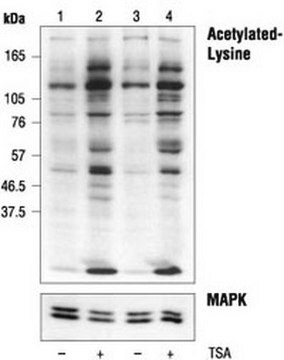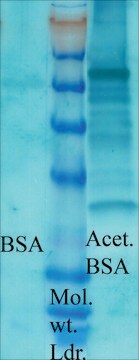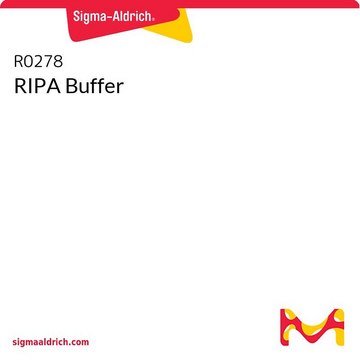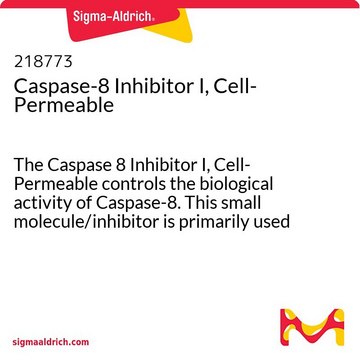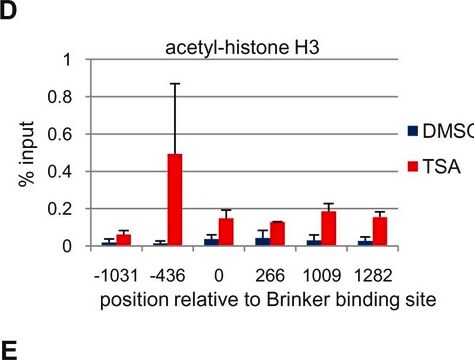05-515
Anti-acetyl-Lysine Antibody, clone 4G12
clone 4G12, Upstate®, from mouse
About This Item
Productos recomendados
origen biológico
mouse
Nivel de calidad
forma del anticuerpo
purified immunoglobulin
tipo de anticuerpo
primary antibodies
clon
4G12, monoclonal
reactividad de especies
human, mouse, rat, vertebrates
fabricante / nombre comercial
Upstate®
técnicas
immunoprecipitation (IP): suitable
western blot: suitable
isotipo
IgG
Condiciones de envío
dry ice
modificación del objetivo postraduccional
unmodified
Descripción general
Especificidad
Inmunógeno
Aplicación
5 μg of a previous lot immunoprecipitated in vitro acetylated PCAF added to a 3T3 RIPA cell lysate. The immunoprecipitated PCAF was detected by subsequent western blot analysis using 1 μg/mL monoclonal anti-GST (Catalog # 05-311).
Calidad
Western Blot Analysis:
1:500 dilution of this lot detected ACETYL-LYSINE on 10 μg of sodium butyrated treated HeLa lysates.
Descripción de destino
Forma física
Almacenamiento y estabilidad
Otras notas
Información legal
¿No encuentra el producto adecuado?
Pruebe nuestro Herramienta de selección de productos.
Código de clase de almacenamiento
10 - Combustible liquids
Clase de riesgo para el agua (WGK)
WGK 1
Certificados de análisis (COA)
Busque Certificados de análisis (COA) introduciendo el número de lote del producto. Los números de lote se encuentran en la etiqueta del producto después de las palabras «Lot» o «Batch»
¿Ya tiene este producto?
Encuentre la documentación para los productos que ha comprado recientemente en la Biblioteca de documentos.
Nuestro equipo de científicos tiene experiencia en todas las áreas de investigación: Ciencias de la vida, Ciencia de los materiales, Síntesis química, Cromatografía, Analítica y muchas otras.
Póngase en contacto con el Servicio técnico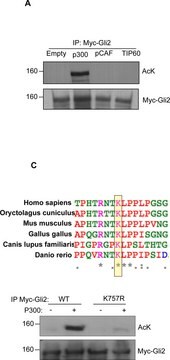

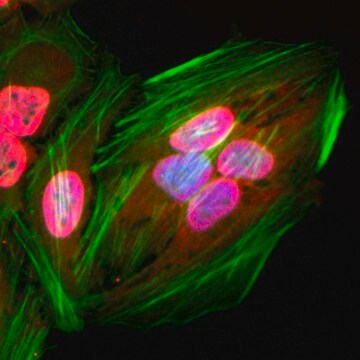
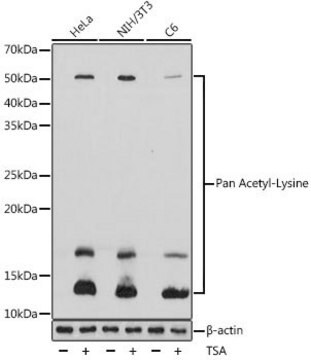
![[β-Mercapto-β,β-cyclopentamethylenepropionyl1, O-me-Tyr2, Arg8]-Vasopressin ≥97% (HPLC)](/deepweb/assets/sigmaaldrich/product/structures/171/970/51ec0a9f-bbad-4de6-8379-01abbe367b05/640/51ec0a9f-bbad-4de6-8379-01abbe367b05.png)
